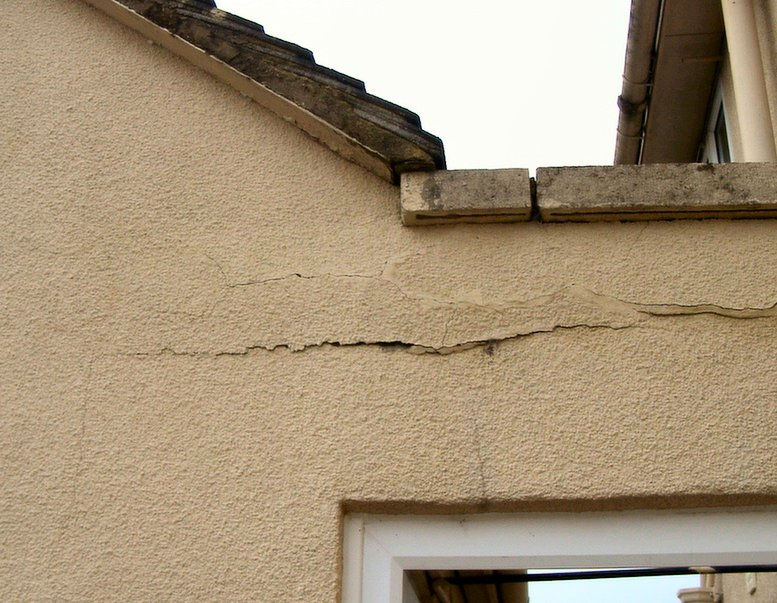Building failure
Failure occurs when the desired outcomes are not achieved. It is the opposite of success.
Culvert, screen and outfall manual, (CIRIA C786) published by CIRIA in 2019, defines failure as: ‘Inability to achieve a defined performance threshold.’ And catastrophic failure as: ‘…the situation where the consequences are immediate and severe.’
Construction projects are costly, complex and often involve a large number of different stakeholders, suppliers and technologies, meaning that the potential for failure is considerable. Failures can occur at a project level, typically resulting in cost or time overruns, or disputes, or they can occur at a construction level, generally caused by deficiencies in design, products, specifications or workmanship.
Some of the most common reasons for project failure include:
- Cost overruns due to inaccurate estimates and budgets, changing market conditions, and so on.
- Poor briefing.
- Scope creep, where the extent of the work expands beyond the original agreement.
- Delays due to incomplete or unclear information.
- Break down in the relationship between the parties to the project.
- Site conditions.
- Design errors, lack of co-ordination or clashes.
- Insolvency of contractors or suppliers.
- Variations.
- Financing.
- Lack of qualified and available workers, specialists, materials, plant, and so on.
Common construction failures include:
- Cracking and building movement.
- Dry rot, wet rot, woodworm and mould.
- Damp.
- Condensation.
- Structural failure.
- Metal fatigue.
- Window and door failure.
- Defects in brickwork (see also: Efflorescence / Spalling).
- Defects in stonework.
- Flooring defects.
- Roofing defects (See also: Flat roof defects).
- Sick building syndrome.
- Wall tie failure.
A structure will fail when a material or system is put under strain at the limit of its strength, resulting in cracks or deformation. Once it surpasses its ability to endure the loads, it will fail. When designing structures, the ultimate failure strength of a material or element must be taken into consideration, with a factor of safety integrated into the design analysis, enabling it to take certain stresses and strains without failing.
Building defects can be 'patent' or 'latent'. Patent defects are those which can be discovered by reasonable inspection. Latent defects are those which cannot be discovered by reasonable inspection, for example problems with foundations which may not become apparent for several years after completion when settlement causes cracking in the building. When a latent defect becomes apparent, it becomes patent rather than latent.
[edit] Related articles on Designing Buildings
- Cascade failure.
- Consolidation.
- Cracking and building movement.
- Defects.
- Defects in brickwork.
- Defects in dot and dab.
- Defects in stonework.
- Deterioration.
- Failure modes and effect analysis (FMEA).
- Failure of cast iron beams.
- Failure to mention asbestos.
- Flat roof defects.
- Flooring defects.
- Ground heave.
- Housing defects.
- In Plain Sight: reducing the risk of infrastructure failure.
- Latent defects.
- Mechanisms of structural failure.
- Patent defects.
- Progressive failure.
- Roofing defects.
- Smarter systems predicting failure.
- Structural failures.
- Wall tie failure.
Featured articles and news
BSRIA Sentinel Clerk of Works Training Case Study
Strengthening expertise to enhance service delivery with integrated cutting-edge industry knowledge.
Impact report from the Supply Chain Sustainability School
Free sustainability skills, training and support delivered to thousands of UK companies to help cut carbon.
The Building Safety Forum at the Installershow 2025
With speakers confirmed for 24 June as part of Building Safety Week.
The UK’s largest air pollution campaign.
Future Homes Standard, now includes solar, but what else?
Will the new standard, due to in the Autumn, go far enough in terms of performance ?
BSRIA Briefing: Cleaner Air, Better tomorrow
A look back at issues relating to inside and outside air quality, discussed during the BSRIA briefing in 2023.
Restoring Abbotsford's hothouse
Bringing the writer Walter Scott's garden to life.
Reflections on the spending review with CIAT.
Retired firefighter cycles world to raise Grenfell funds
Leaving on 14 June 2025 Stephen will raise money for youth and schools through the Grenfell Foundation.
Key points for construction at a glance with industry reactions.
Functionality, visibility and sustainability
The simpler approach to specification.
Architects, architecture, buildings, and inspiration in film
The close ties between makers and the movies, with our long list of suggested viewing.
SELECT three-point plan for action issued to MSPs
Call for Scottish regulation, green skills and recognition of electrotechnical industry as part of a manifesto for Scottish Parliamentary elections.
UCEM becomes the University of the Built Environment
Major milestone in its 106-year history, follows recent merger with London School of Architecture (LSE).
Professional practical experience for Architects in training
The long process to transform the nature of education and professional practical experience in the Architecture profession following recent reports.
A people-first approach to retrofit
Moving away from the destructive paradigm of fabric-first.
New guide for clients launched at Houses of Parliament
'There has never been a more important time for clients to step up and ...ask the right questions'
The impact of recycled slate tiles
Innovation across the decades.
EPC changes for existing buildings
Changes and their context as the new RdSAP methodology comes into use from 15 June.


























